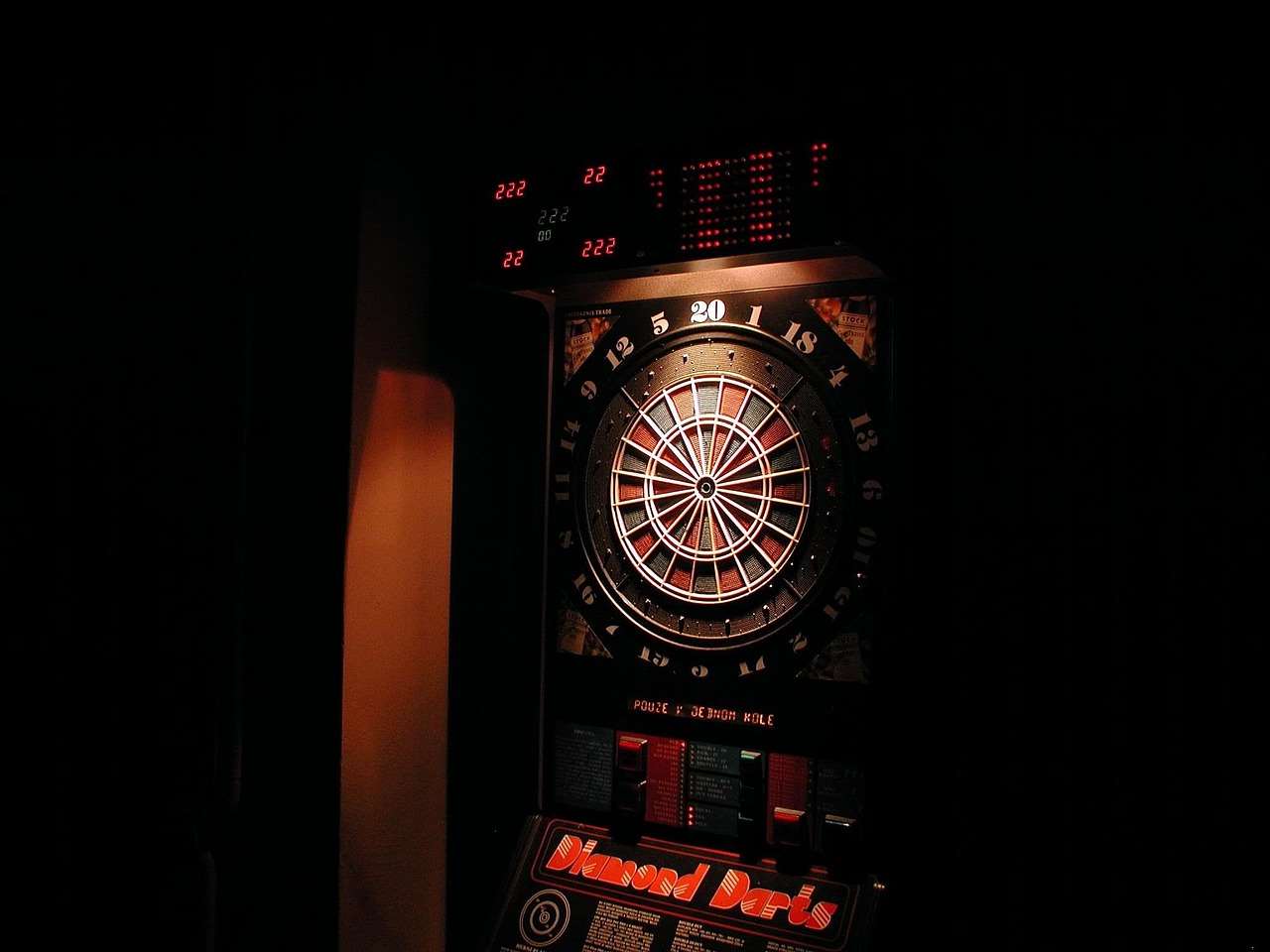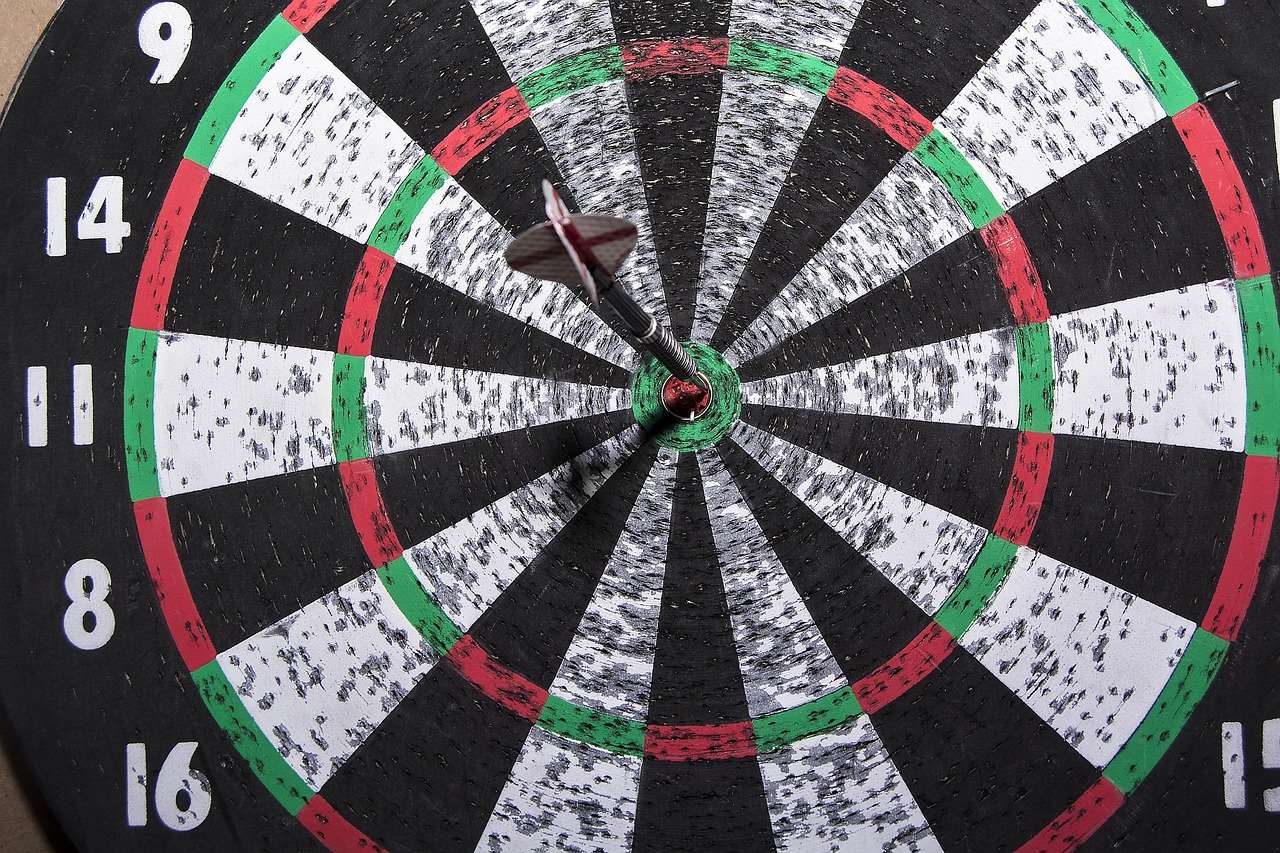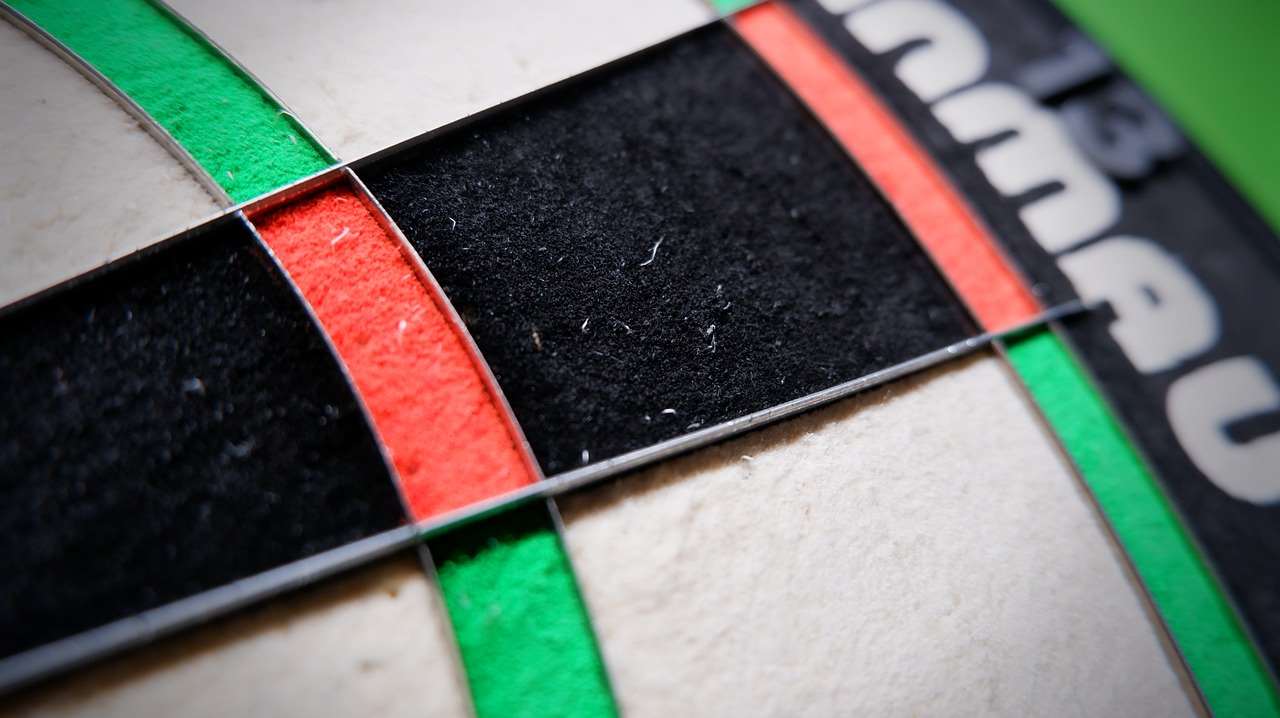Want to improve your game and start hitting those crucial doubles? This article provides a comprehensive guide to **darts lessons**, offering practical tips and techniques to elevate your skills from beginner to seasoned player. You’ll discover everything from basic stance and grip to advanced throwing techniques and mental strategies.
⚠️ Still Using Pen & Paper (or a Chalkboard)?! ⚠️
Step into the future! The Dart Counter App handles all the scoring, suggests checkouts, and tracks your stats automatically. It's easier than you think!
Try the Smart Dart Counter App FREE!Ready for an upgrade? Click above!
Finding the Right Darts Lessons for You
Embarking on the journey to improve your darts game starts with understanding your current skill level and identifying areas where you need the most improvement. There are various types of **darts lessons** available, catering to different needs and preferences. Consider what you hope to achieve and how you learn best when choosing a learning path.
Different Types of Darts Lessons
- Online Courses: Offer flexibility and convenience, allowing you to learn at your own pace. Look for courses with video demonstrations and personalized feedback.
- Group Lessons: Provide a social and interactive learning environment, allowing you to learn from others and receive coaching in a group setting. Often more affordable than private lessons.
- Private Coaching: Offers personalized instruction and tailored feedback, allowing you to focus on your specific weaknesses and strengths. This is the most effective, albeit often most expensive, option.
- Books and Tutorials: A cost-effective way to learn the fundamentals and improve your understanding of the game. Supplement with practice and experimentation.

When selecting **darts lessons**, consider the instructor’s experience and qualifications. Look for coaches with a proven track record of success and a clear understanding of the game. Don’t be afraid to ask about their coaching philosophy and how they tailor their approach to individual students. Many local dart leagues and pubs also offer informal advice and coaching sessions.
Mastering the Fundamentals: Stance, Grip, and Throw
Before diving into advanced techniques, it’s crucial to establish a solid foundation in the fundamentals. A proper stance, grip, and throw are essential for accuracy and consistency. Think of these as the ABCs of **darts lessons**.
The Stance: Finding Your Balance
Your stance is the foundation of your throw. A stable and balanced stance allows you to maintain control and consistency throughout your motion. Experiment with different stances to find what feels most comfortable and natural for you. Here’s what to consider:
- Foot Placement: Most players prefer a stance with their dominant foot forward, angled towards the dartboard.
- Weight Distribution: Distribute your weight evenly between both feet to maintain balance.
- Body Alignment: Keep your body aligned towards the board, with your shoulders square and your eyes focused on the target.
Finding the optimal stance is a vital part of beginning **darts lessons**. Don’t be afraid to experiment and adjust your stance as you progress. Try bulls grenade darts for added stability.
The Grip: Finding Your Comfort Zone
Your grip is your connection to the dart. A comfortable and consistent grip allows you to control the dart and release it smoothly. There’s no single “right” grip, so experiment to find what works best for you. Here are some common grip styles:
- Two-Finger Grip: A simple and versatile grip, holding the dart between your thumb and forefinger.
- Three-Finger Grip: Provides more control and stability, using your thumb, forefinger, and middle finger.
- Four-Finger Grip: Offers maximum control, using all four fingers to hold the dart.
No matter what grip you choose, ensure that it is relaxed and not too tight. A tense grip can lead to inconsistencies and inaccurate throws. Remember, practice is key to mastering your grip and achieving consistent results. You might even find a wired dart board light improves your grip by helping you see better.
The Throw: A Smooth and Consistent Motion
Your throw is the culmination of all your preparation. A smooth and consistent throwing motion is essential for accuracy and repeatability. Focus on the following elements:
- Backswing: Draw the dart back smoothly, keeping your elbow high and your wrist relaxed.
- Forward Motion: Bring the dart forward in a smooth, fluid motion, keeping your elbow stable and your wrist locked.
- Release: Release the dart at the peak of your forward motion, allowing your wrist to flick naturally.
- Follow-Through: Follow through with your arm after releasing the dart, pointing towards your target.
Practice your throwing motion repeatedly, focusing on consistency and accuracy. Record yourself throwing and analyze your technique to identify any areas for improvement. Working on a consistent throw is one of the key components of **darts lessons**.

Advanced Darts Techniques: Aiming, Grouping, and Mental Game
Once you’ve mastered the fundamentals, you can start exploring advanced techniques to further refine your game. These techniques can help you improve your accuracy, consistency, and mental toughness. Consider advanced **darts lessons** to truly hone your craft.
Aiming Strategies: Hitting Your Target
Effective aiming is crucial for hitting your desired targets. Here are some strategies to improve your aiming accuracy:
- Focus on the Target: Maintain laser-like focus on the specific segment you’re aiming for.
- Visualize the Trajectory: Visualize the path of the dart from your hand to the target.
- Use Reference Points: Use visual reference points on the board to help you align your throw.
Experiment with different aiming techniques to find what works best for you. Some players prefer to focus on the center of the target, while others prefer to focus on the edge. Consistent practice and experimentation are key to improving your aiming accuracy.
Grouping: Tightening Your Darts
Grouping refers to the ability to throw multiple darts close together. Tight grouping is essential for scoring consistently and hitting crucial doubles and triples. To improve your grouping, focus on:
- Consistent Throwing Motion: Maintain a smooth and repeatable throwing motion.
- Consistent Release Point: Release the dart at the same point in your throwing motion every time.
- Consistent Follow-Through: Follow through with your arm after releasing the dart, pointing towards your target.
Practice throwing at a single target repeatedly, focusing on tightening your grouping. Analyze your results and make adjustments to your technique as needed. Working on grouping is often a key focus in **darts lessons**.
The Mental Game: Staying Focused Under Pressure
Darts is not just a physical game; it’s also a mental game. The ability to stay focused, manage pressure, and maintain a positive attitude is essential for success. Here are some tips for improving your mental game:
- Develop a Pre-Throw Routine: Establish a consistent routine before each throw to help you focus and relax.
- Visualize Success: Visualize yourself hitting your target and achieving your goals.
- Stay Positive: Maintain a positive attitude, even when you miss.
- Manage Pressure: Learn to manage pressure by focusing on the process rather than the outcome.

Consider seeking guidance from a sports psychologist or mental coach to further develop your mental game skills. Often, the mental aspect is ignored but can make a huge difference. Remember players choice dartboard can improve your concentration as well.
Equipment Essentials: Darts, Dartboards, and Accessories
Having the right equipment can significantly impact your performance. Choosing the right darts, dartboard, and accessories is essential for maximizing your potential. Expert **darts lessons** often include guidance on selecting the best equipment for your style.
Choosing the Right Darts
Darts come in various weights, shapes, and materials. Experiment with different types of darts to find what feels most comfortable and suits your throwing style. Consider the following factors:
- Weight: Darts typically range from 16 to 30 grams. Beginners often start with lighter darts and gradually increase the weight as they gain experience.
- Barrel Shape: The shape of the barrel can affect your grip and throwing motion. Common barrel shapes include straight, torpedo, and bomb.
- Material: Darts are typically made from brass, nickel silver, or tungsten. Tungsten darts are more expensive but offer greater density and durability.
Visit a local darts shop and try out different types of darts before making a purchase. Get advice from experienced players or coaches on selecting the right darts for your needs.
Selecting the Right Dartboard
A high-quality dartboard is essential for accurate scoring and durability. Look for a dartboard made from sisal fibers, which offer excellent self-healing properties. Consider the following factors:
- Sisal Quality: Choose a dartboard made from high-quality sisal fibers for maximum durability.
- Wire Construction: Look for a dartboard with thin wires and a staple-free bullseye for fewer bounce-outs.
- Board Thickness: Choose a dartboard with a sufficient thickness to prevent darts from passing through.

Ensure that your dartboard is properly mounted at the regulation height and distance. A level and stable dartboard is essential for accurate practice and play.
Essential Accessories
In addition to darts and a dartboard, there are several essential accessories that can enhance your playing experience:
- Dart Flights: Flights affect the dart’s trajectory and stability. Experiment with different flight shapes and sizes to find what works best for you.
- Dart Shafts: Shafts connect the flight to the barrel and can affect the dart’s balance. Choose shafts that are the appropriate length for your grip and throwing style.
- Oche (Throwing Line): A clearly marked oche is essential for fair play.
- Dart Mat: A dart mat protects your floor from stray darts and provides a comfortable surface to stand on.
Investing in quality equipment can improve your performance and enjoyment of the game. Don’t underestimate the importance of having the right tools for the job. Check out darts technique for beginners to see other ways to improve.
Practice Drills and Routines for Improvement
Consistent practice is essential for improving your darts skills. Incorporating structured drills and routines into your practice sessions can help you target specific areas for improvement and track your progress. Many **darts lessons** will provide structured practice schedules.
Target Practice Drills
Focus on hitting specific targets to improve your accuracy and consistency. Here are some effective target practice drills:
- Around the Clock: Start at 1 and work your way around the board to 20, hitting each number in sequence.
- Doubles and Triples: Focus on hitting doubles and triples to improve your scoring ability.
- Shanghai: Throw at a single number, aiming for the single, double, and triple segments.
Vary your target practice drills to keep your practice sessions engaging and challenging. Track your scores and monitor your progress over time.
Scoring Drills
Practice scoring to improve your calculation skills and strategic thinking. Here are some effective scoring drills:
- 100 Out: Start with 100 points and try to finish the game in as few darts as possible.
- Checkout Practice: Practice finishing checkouts from various scores, such as 170, 160, and 150.
- Cricket Practice: Practice hitting the numbers required in Cricket, focusing on accuracy and strategic play.
Use a Dart game scoring app to track your scores and analyze your performance. Identify your strengths and weaknesses and focus on improving your areas of weakness.
Consistency Drills
Focus on maintaining a consistent throwing motion and release point. Here are some effective consistency drills:
- Slow and Steady: Throw darts at a slow and deliberate pace, focusing on maintaining a consistent motion.
- Mirror Practice: Practice throwing in front of a mirror to observe your throwing motion and identify any inconsistencies.
- Blindfolded Throwing: Practice throwing blindfolded to develop your feel for the dart and improve your muscle memory.

Dedicate time to practice regularly, even if it’s just for a few minutes each day. Consistency is key to improving your darts skills over time. Now you know that **darts lessons** and practice go hand-in-hand.
Conclusion
Improving your darts game requires dedication, practice, and a willingness to learn. By mastering the fundamentals, exploring advanced techniques, and incorporating structured practice drills into your routine, you can elevate your skills and achieve your goals. Remember the value of taking **darts lessons** to help expedite your improvement.
Don’t be afraid to experiment, seek guidance from experienced players or coaches, and most importantly, have fun! Start practicing today and unlock your full potential on the oche. Consider starting with some of our free **darts lessons** online and then invest in a personalized training program!
Hi, I’m Dieter, and I created Dartcounter (Dartcounterapp.com). My motivation wasn’t being a darts expert – quite the opposite! When I first started playing, I loved the game but found keeping accurate scores and tracking stats difficult and distracting.
I figured I couldn’t be the only one struggling with this. So, I decided to build a solution: an easy-to-use application that everyone, no matter their experience level, could use to manage scoring effortlessly.
My goal for Dartcounter was simple: let the app handle the numbers – the scoring, the averages, the stats, even checkout suggestions – so players could focus purely on their throw and enjoying the game. It began as a way to solve my own beginner’s problem, and I’m thrilled it has grown into a helpful tool for the wider darts community.